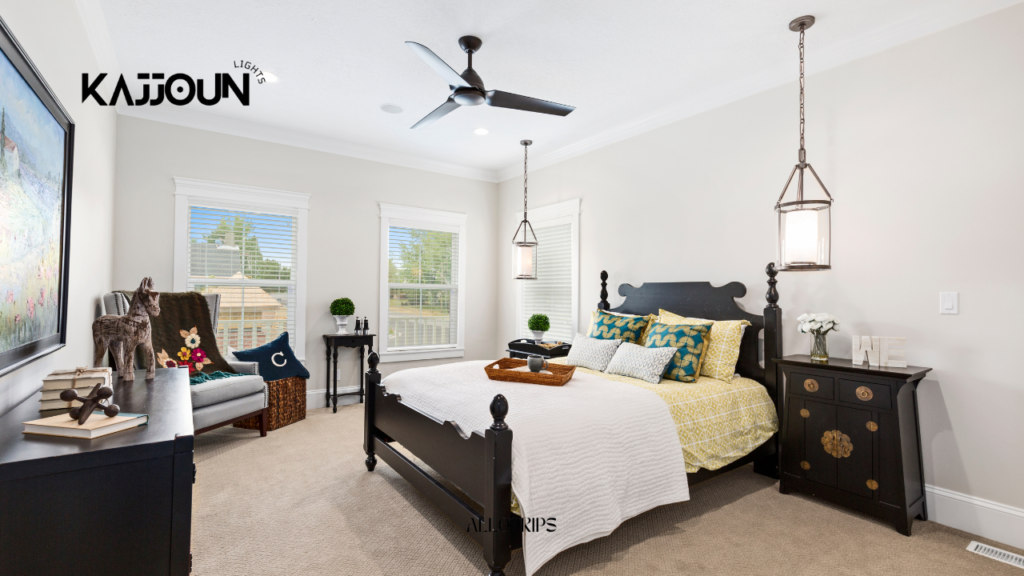Uncategorized
Fresh Ideas for Decorating Your Pendant lights for bedroom
The bedroom is not just a place to end your day; it’s a sanctuary where comfort meets personal style, and the right lighting is key to achieving this harmony. While the choices in bedroom lighting are vast, pendant lights offer a unique blend of functionality and aesthetic appeal. These versatile fixtures can transform a simple room into a sophisticated retreat, subtly guiding the mood of your space with their radiant glow.
As we delve into the world of pendant lighting, we’ll explore how these decorative pieces are not just sources of light but also an extension of your personal taste. They can be the central statement of a room or a subtle complement to your existing decor. Whether you’re looking to revamp your current space or starting from scratch, the addition of pendant lights can breathe new life into your bedroom decor.
Section 1: Understanding Pendant Lights
Definition and Characteristics of Pendant Lights
Pendant lights, often referred to as drop or suspender lights, are lone light fixtures that hang from the ceiling, usually suspended by a cord, chain, or metal rod. Unlike flush-mounted lights that attach directly to the ceiling, pendant lights literally stand out, creating an eye-catching focal point while providing illumination.
These fixtures come in a myriad of styles, shapes, and sizes, making them incredibly adaptable to a variety of bedroom themes. From sleek and modern designs with clean lines to ornate and vintage-inspired options, there’s a pendant light for every aesthetic.
Types of Pendant Lights Suitable for Bedroom Use
When considering pendant lights for the bedroom, the function is just as crucial as form. Different types of pendant lights serve various purposes:
- Mini Pendants: Ideal for smaller bedrooms or reading corners, providing focused lighting without overwhelming the space.
- Bowl Pendants: Emit a soft, diffused light that’s perfect for creating a calming atmosphere conducive to relaxation.
- Drum Pendants: With their wide, cylindrical shades, these are excellent for general lighting and can add a contemporary flair.
- Globe Pendants: Round and retro, these provide 360-degree illumination and can serve as a statement piece.
The Role of Pendant Lights in Interior Design
In interior design, lighting is a crucial element that can define the space. Pendant lights, in particular, serve as both illumination and ornamentation. They can be used to highlight architectural features, brighten dark corners, or provide task lighting where needed. Moreover, they contribute to the layered lighting design, which is key to a well-lit and inviting bedroom.
In the next sections, we’ll explore how to choose the perfect pendant light for your bedroom, tips for placement, and creative ideas to style them.
Section 2: Choosing the Right Pendant Lights for Your Bedroom
How to Select the Right Size and Scale of Pendant Lights
When it comes to pendant lights, size does matter. A light that’s too large can overwhelm a room, while one that’s too small may get lost in the space. The golden rule is to measure your room size and ceiling height first. As a guideline, add the room’s length and width in feet, and the sum, in inches, should approximate the pendant’s diameter. For instance, a 12 by 12-foot room could handle a 24-inch diameter pendant.
Considering the Height and Positioning for Optimal Effect
The drop height of your pendant is crucial. Over a bedside table, the lower edge of the pendant should be approximately 16 to 24 inches above the table surface to ensure it illuminates the area without obstructing your movement. For a central room pendant, the bottom should be at least 7 feet from the floor to avoid any head-bumping incidents.
Style Guide: Matching Pendant Lights with Your Bedroom’s Theme
The style of your pendant light should complement your bedroom’s existing decor. For a minimalist bedroom, look for pendants with clean lines and a monochrome palette. If your room has a bohemian feel, choose pendants with natural materials like rattan or wood. Vintage-styled bedrooms can be paired with antique-finished or industrial metal pendants for added character.
Section 3: Lighting Placement Strategies
Central Lighting vs. Asymmetrical Arrangements
While a single pendant light in the center of the room is a classic choice, don’t be afraid to play with asymmetry. Consider flanking your bed with a pair of pendants instead of traditional table lamps. This not only saves space but also adds a modern touch to the room.
Using Pendant Lights as Bedside Lamps
Pendant lights make excellent bedside lighting solutions. They free up space on your nightstand while providing the perfect reading light. Choose adjustable pendants for flexibility, or ones with a dimmer function to set the right mood for relaxation.
Tips for Creating Ambient Lighting with Pendant Lights
To create a cozy ambiance, opt for pendants with a warm light or with shades that soften and diffuse the light. Consider using a cluster of small pendants at different heights to add depth and interest to the room. Dimmer switches are also a great addition, allowing you to adjust the light intensity to suit your mood.
Section 4: Color and Material Considerations
The Impact of Different Materials on Lighting
Materials can drastically alter the light in a room. Metal pendants can direct light in specific directions, creating a more focused light, while glass or semi-transparent materials provide a softer, more ambient glow. Fabric shades can introduce texture and color to the room while softening the light for a more diffused effect.
Choosing Colors to Set the Mood and Complement Your Decor
The color of your pendant light should harmonize with your bedroom’s color scheme. Neutral colors are versatile and can blend with most decors, while bold or contrasting colors can become a focal point. Remember, dark colors may absorb light, while lighter colors will reflect it, affecting the overall luminosity of your pendant light.

